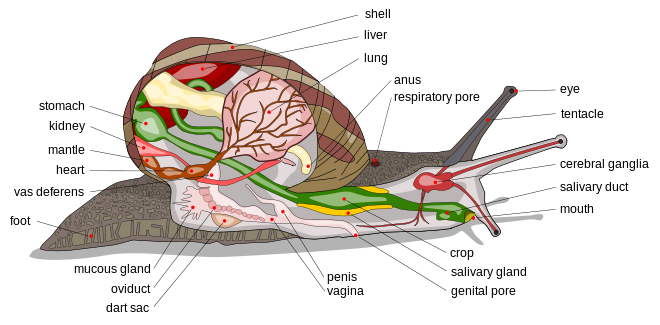
Reproduction
The Patera laevior is hermaphroditic, or monogenic, like all
gastropods (Hickman et al., 2009). This means that the snail has
both male and female genitalia (Gillis, 2012).
Asexual reproduction has one major problem, there is no
genetic variation possible among the population (Hickman et al.,
2009). The only possible genetic variation possible is through
mutation (Hickman et al., 2009). This can make it hard to adapt if
the environment were to change around the snails, potentially
leading to extinction (Hickman et al., 2009). However, sexual
reproduction can also have it set backs, if there is no mating then
the population will die off (Hickman et al., 2009).

Being a really
slow animal, it is possible that they won't meet another member of
their species during their lifetime (Hickman et al., 2009).
That's why it is so advantageous for snails to be hermaphroditic, if
they don't meet a mate in they're lifetime, they can fertilize
themselves and keep their lineage alive until a time that they can
mate (Hickman et al., 2009).
When snails do mate, they take full advantage of their monogenic
nature and act both as a male and as a female (Hickman
et al., 2009). This allows for the greatest amount of offspring
per mating and, in addition, allows for the greatest genetic
variation possible (Hickman
et al., 2009).
